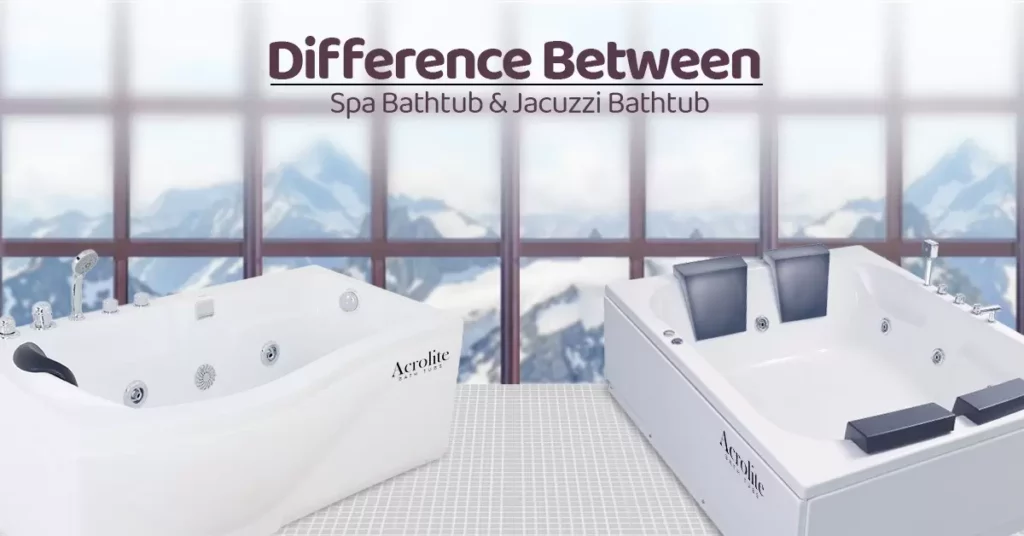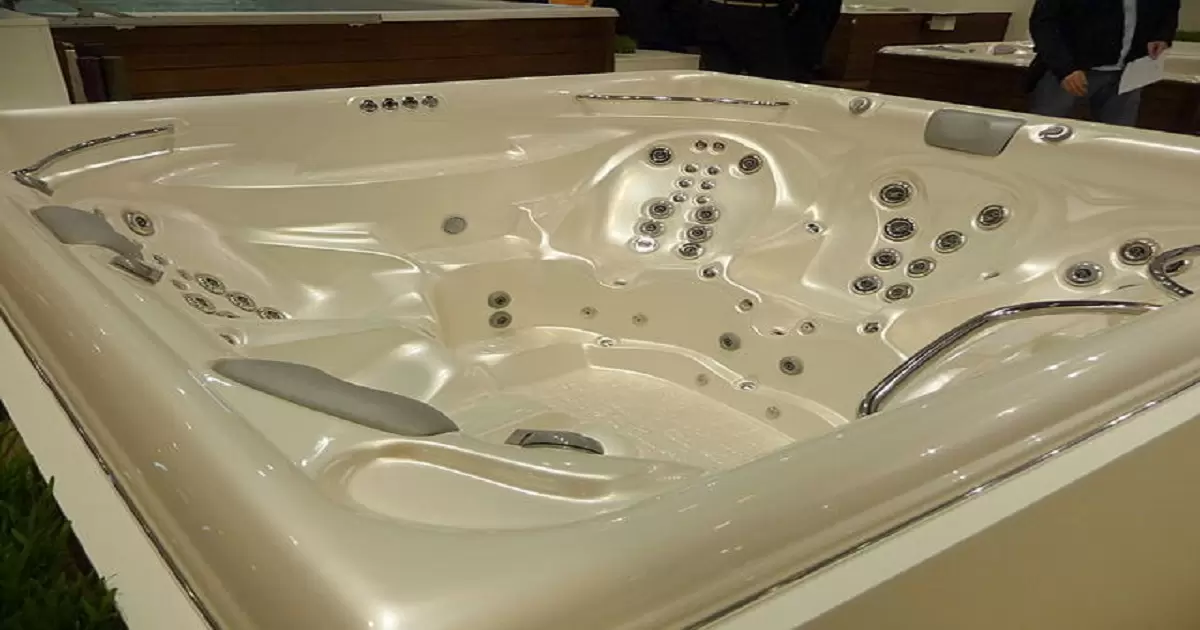A whirlpool is a small pool or tub equipped with underwater jets that create a swirling or bubbling water effect. It’s designed for relaxation and hydrotherapy purposes, typically installed in homes, hotels, or spas.
Are you curious about the difference between a whirlpool and a hot tub? Wondering if they’re the same thing? Let’s dive into the details and uncover the distinctions between these two water-based relaxation options.
While whirlpools and hot tubs share similarities, like providing a soothing soak, whirlpools are usually smaller, have focused jet systems, and are commonly found in bathrooms for therapeutic use. In contrast, hot tubs are larger, can accommodate multiple people, and are often used outdoors for relaxation and socializing. Understanding these differences will help you choose the right option for your needs.
Historical Evolution of Whirlpools and Hot Tubs
Whirlpools and hot tubs have a rich history, evolving over centuries. Originally, hot tubs were simple wooden barrels used for bathing, dating back to the early civilizations. Over time, they evolved into luxury items, especially during the Roman era, where large public baths were common. Whirlpools, on the other hand, were initially natural formations used for therapeutic purposes. The concept of artificially creating whirlpool motion in water emerged later, leading to the modern whirlpool baths.
This evolution has been marked by technological advancements and changing cultural attitudes towards leisure and wellness. From wooden tubs and natural pools, the journey has led to today’s sophisticated, electronically controlled systems. These changes reflect a shift from basic hygiene to a focus on relaxation, therapy, and luxury in personal care.
Technical Differences between Whirlpools and Hot Tubs

Technical differences between whirlpools and hot tubs are significant. Whirlpools, often found in bathrooms, are typically equipped with jets that circulate water to create a massaging effect. They are designed for short-term use, focusing on targeted hydrotherapy. Hot tubs, conversely, are larger, designed for extended relaxation, and often situated outdoors. They maintain a constant high temperature and may have jets, but the primary purpose is leisurely soaking rather than intense hydrotherapy.
Additionally, whirlpools are generally built for single-person use, focusing on individual therapeutic needs. Hot tubs, in contrast, are designed to accommodate multiple people, making them popular for social gatherings. This distinction highlights the different purposes and settings in which each is used.
Common Features of Whirlpools and Hot Tubs
Despite their differences, whirlpools and hot tubs share several features. Both are designed to provide a relaxing experience through the use of warm water. The warmth of the water in both helps to soothe muscles and joints, aiding in relaxation and stress relief. Additionally, both can be equipped with jets, though their intensity and purpose might vary. These jets enhance the therapeutic effect by providing a massage-like sensation.
| Feature | Whirlpool | Hot Tub |
| Primary Use | Hydrotherapy | Leisure and Relaxation |
| Location | Typically Indoor | Often Outdoor |
| Size | Smaller, single-person | Larger, multiple people |
| Water Temperature | Varies | Constantly Warm |
| Jets | High-intensity for massage | Lower intensity for relaxation |
This table summarizes key aspects where whirlpools and hot tubs converge. Both serve to enhance the quality of life through therapeutic and leisurely means, albeit in different settings and scales.
Health Benefits and Therapeutic Uses
The health benefits of whirlpools and hot tubs are numerous. Whirlpools are known for their therapeutic uses, particularly in hydrotherapy. The targeted jet streams help in alleviating muscle soreness, improving circulation, and providing relief for certain types of chronic pain. This makes them a popular choice for physical therapy and rehabilitation.
Hot tubs, while also offering muscle relaxation, focus more on overall stress relief and leisure. The consistent warmth of the water aids in reducing stress, improving sleep patterns, and can even have positive effects on mental health. The social aspect of hot tubs also contributes to emotional wellbeing, offering a space for relaxation and socialization.
Installation and Maintenance Requirements
Installing whirlpools and hot tubs requires careful consideration. Whirlpools, being smaller, are easier to integrate into existing bathroom spaces and generally have simpler plumbing requirements. However, they do need a strong support structure due to the weight of the water. Regular cleaning and maintenance are necessary to prevent mold and bacteria growth, especially around the jets.
Hot tubs require a more elaborate setup, often needing dedicated electrical installations and sturdy platforms. They demand consistent maintenance, including regular water treatment to balance pH levels and prevent algae growth. The outdoor setting of hot tubs also means they are subject to environmental factors, requiring additional care and upkeep.
Consumer Preferences and Trends
Consumer preferences in whirlpools and hot tubs have evolved over time. Modern consumers are increasingly looking for products that offer a blend of luxury, efficiency, and health benefits. Whirlpools are popular among those seeking a spa-like experience in the comfort of their home, particularly in urban settings where space is limited. They are often chosen for their therapeutic benefits and space-saving design.
In contrast, hot tubs have become a symbol of leisure and social lifestyle. They are preferred for outdoor settings, like gardens and patios, and are popular in homes where hosting and social gatherings are frequent. The trend towards eco-friendly and energy-efficient models is also shaping consumer choices in both whirlpools and hot tubs.
Safety Considerations and Guidelines
Safety is paramount when using whirlpools and hot tubs. For whirlpools, it’s crucial to ensure that the electrical components are safely installed and waterproofed. Since they are often used indoors, adequate ventilation is essential to prevent excess humidity and mold growth. Additionally, the use of anti-slip mats and proper maintenance of jets are important safety measures.
For hot tubs, especially those outdoors, electrical safety is a primary concern, along with the stability of the installation site. Regular water testing and treatment are essential to prevent bacterial and algae growth. Moreover, covering the hot tub when not in use is crucial for safety, particularly in households with children and pets.
Environmental Impact and Energy Efficiency
The environmental impact and energy efficiency of whirlpools and hot tubs are increasingly important considerations. Whirlpools, due to their smaller size and shorter usage time, generally consume less water and energy. However, innovations in eco-friendly materials and energy-saving technologies are being incorporated to make them more sustainable.
Hot tubs, being larger and used for longer periods, typically have a higher energy and water footprint. Advances in thermal insulation, energy-efficient heating systems, and eco-friendly water treatment methods are being developed to mitigate this impact. Consumers are now more inclined towards models that balance luxury with sustainability.
Future Innovations and Market Outlook
The future of whirlpools and hot tubs looks promising with continuous innovations. Smart technology integration is a key trend, with features like remote control operation, automated cleaning systems, and energy management becoming standard. Whirlpools are expected to become more compact and efficient, catering to the growing demand in urban residences.
The hot tub market is likely to see advancements in eco-friendly designs and materials. Innovations in heating and water purification systems are anticipated to enhance energy efficiency and sustainability. Overall, the focus will be on creating products that offer luxury and relaxation while being mindful of environmental impacts and user convenience.
FAQs
What is the main difference between a whirlpool and a hot tub?
Whirlpools are typically smaller and have focused jet systems, often used for therapeutic purposes indoors. Hot tubs are larger, designed for relaxation and socializing, and are commonly placed outdoors.
Can a whirlpool be considered a type of hot tub?
A whirlpool can be considered a type of hot tub, but they are not the same. A whirlpool is a subset of hot tubs designed with specific therapeutic features.
Are whirlpools and hot tubs used for the same purposes?
Both whirlpools and hot tubs provide relaxation and hydrotherapy, but whirlpools are more specialized for therapeutic benefits, while hot tubs offer a broader range of uses.
Can you install a whirlpool and a hot tub in the same location?
Yes, you can install both a whirlpool and a hot tub in the same location if you have the space and the desired features, allowing you to enjoy the benefits of both.
Which one should I choose – a whirlpool or a hot tub?
Your choice depends on your specific needs and preferences. If you prioritize therapeutic benefits and have limited space, a whirlpool may be ideal. If you seek
Conclusion
In the end, whether you opt for a whirlpool or a hot tub, both offer relaxation and a break from the daily grind. They may have differences in size and location, but they share the goal of providing a soothing water experience. So, choose the one that suits your space and needs best, and enjoy the calming embrace of warm, bubbling water.
Remember, it’s not just the name that matters; it’s the experience. Whether it’s the therapeutic jets of a whirlpool or the social atmosphere of a hot tub, what counts most is the relaxation and rejuvenation they bring to your life. So, immerse yourself in the world of aquatic comfort, whether it’s a whirlpool or a hot tub – both can be your personal oasis.








